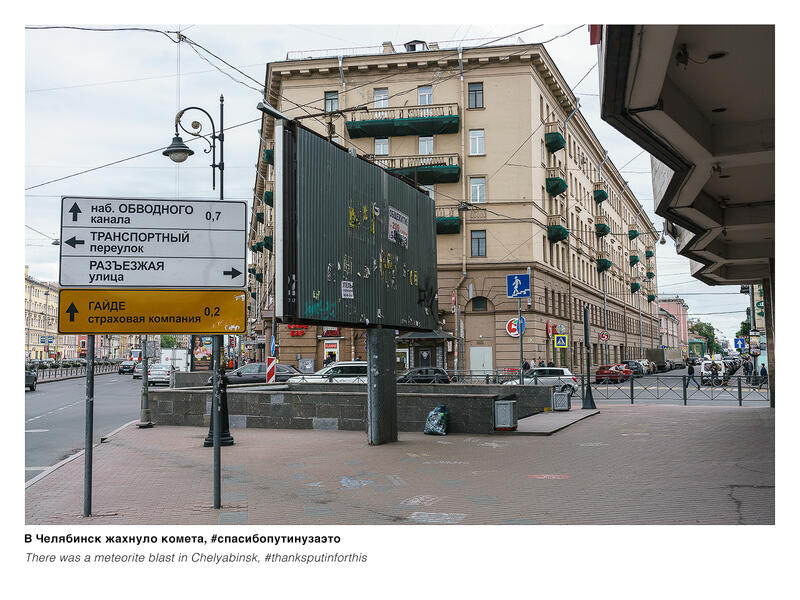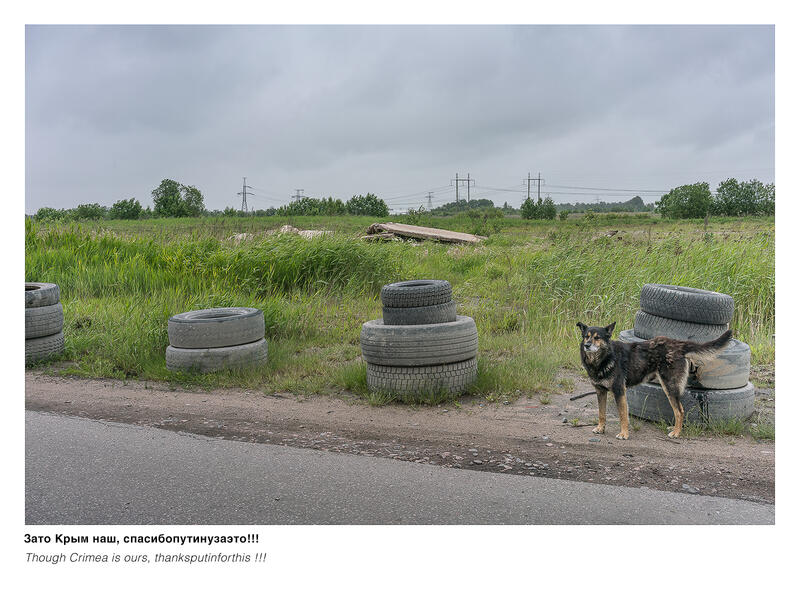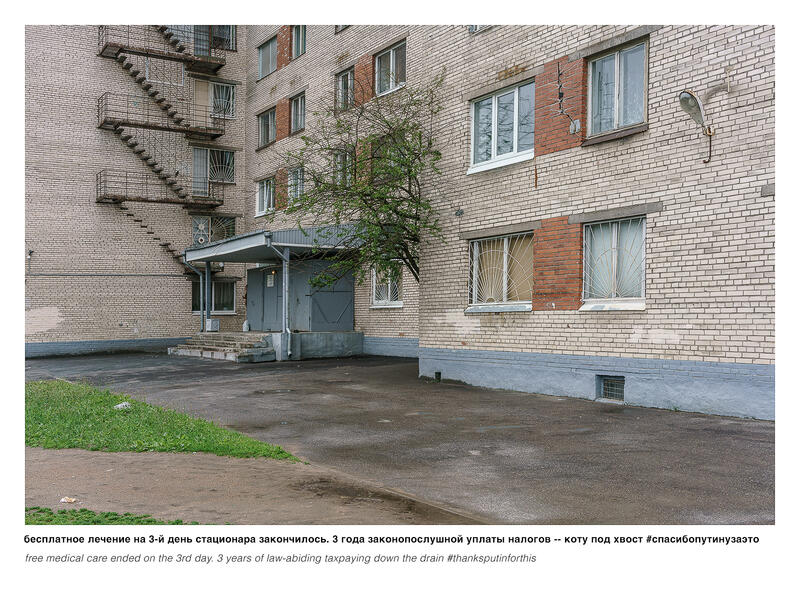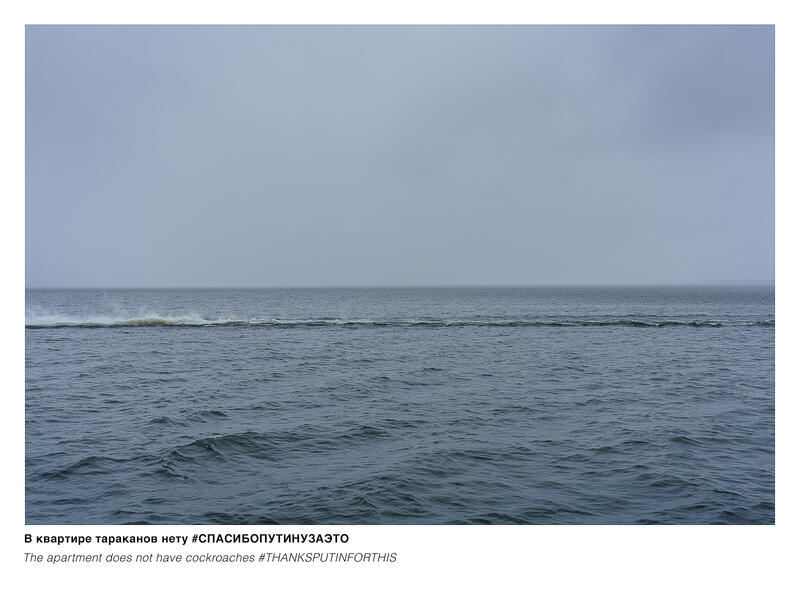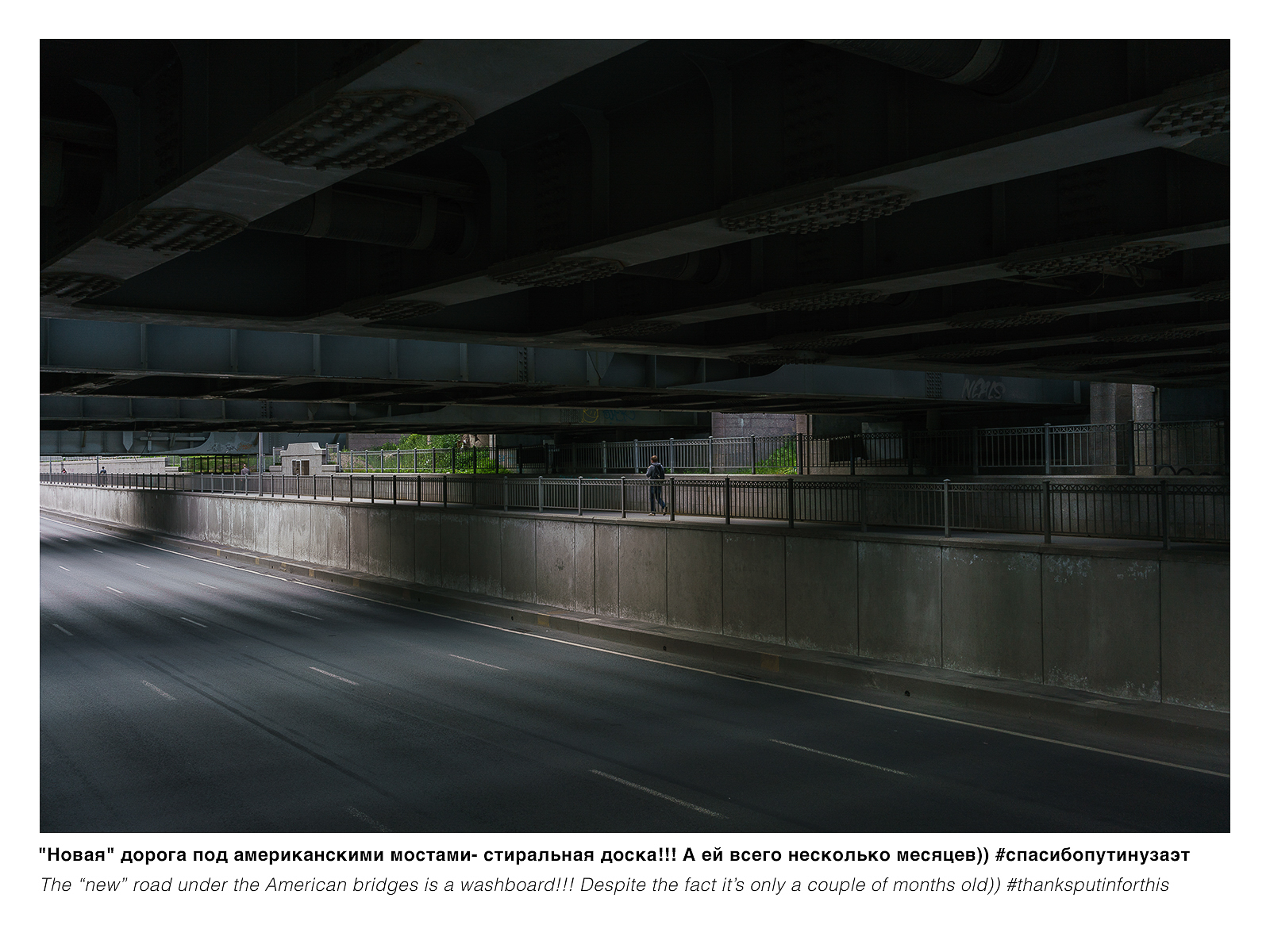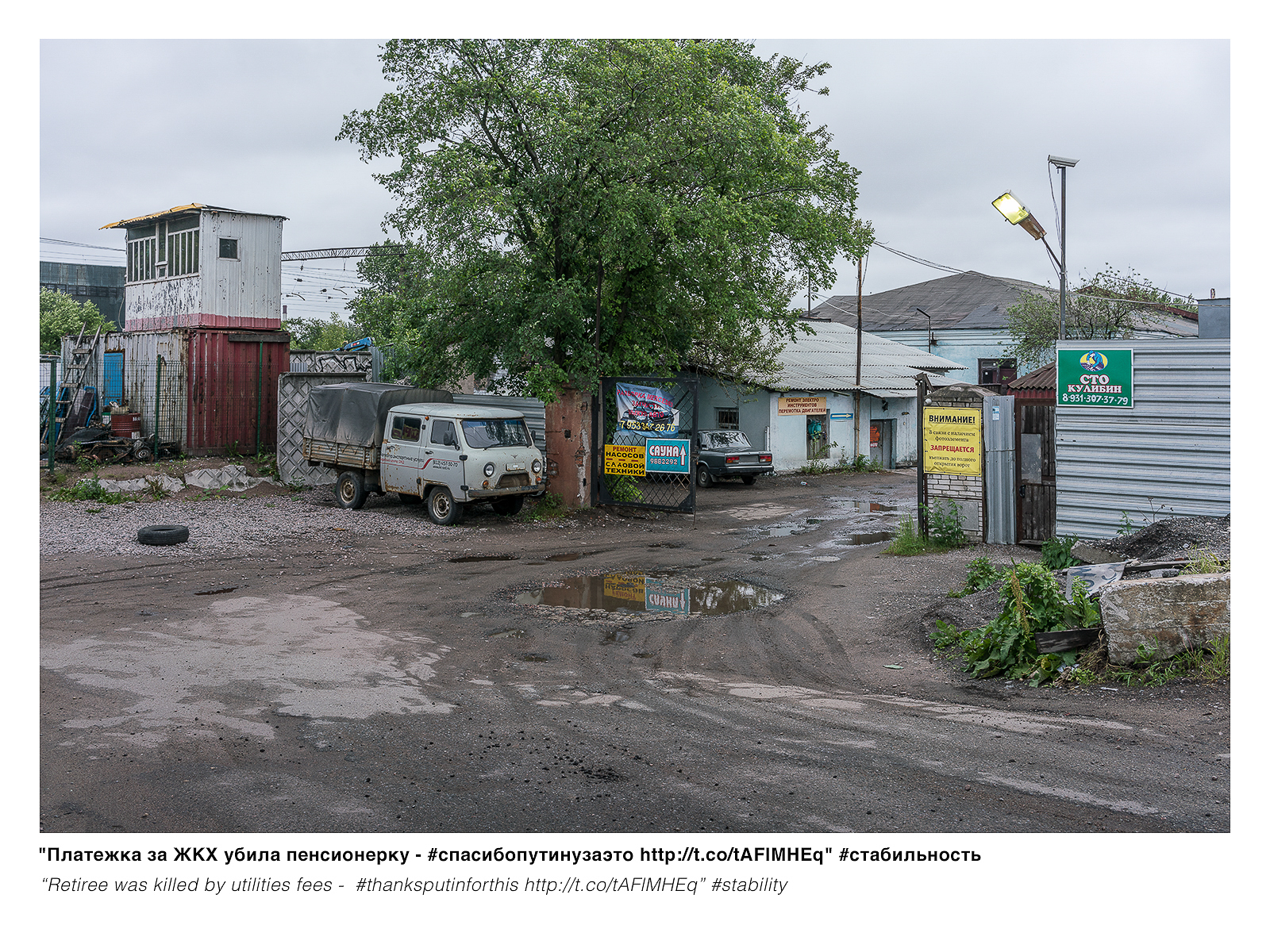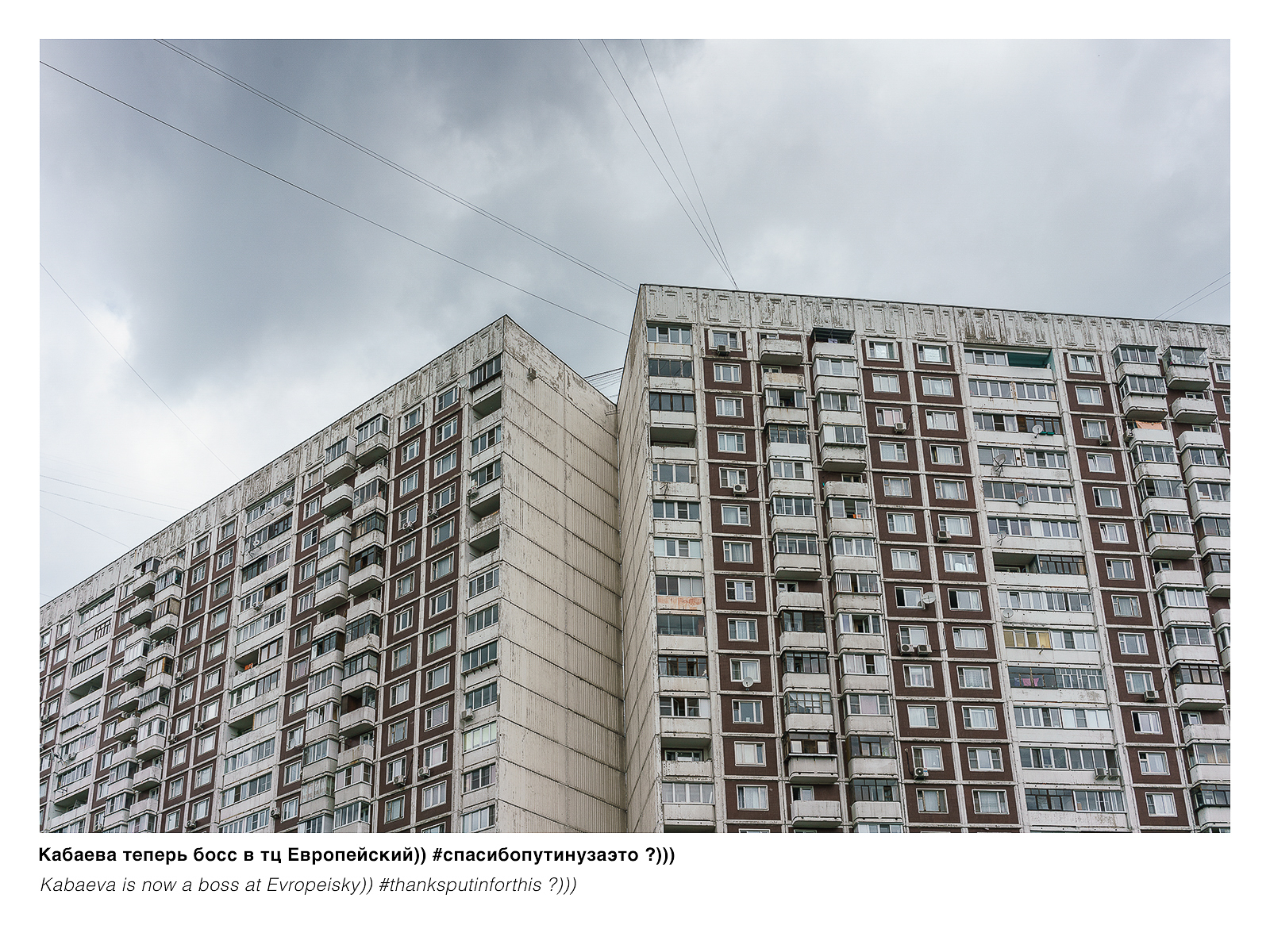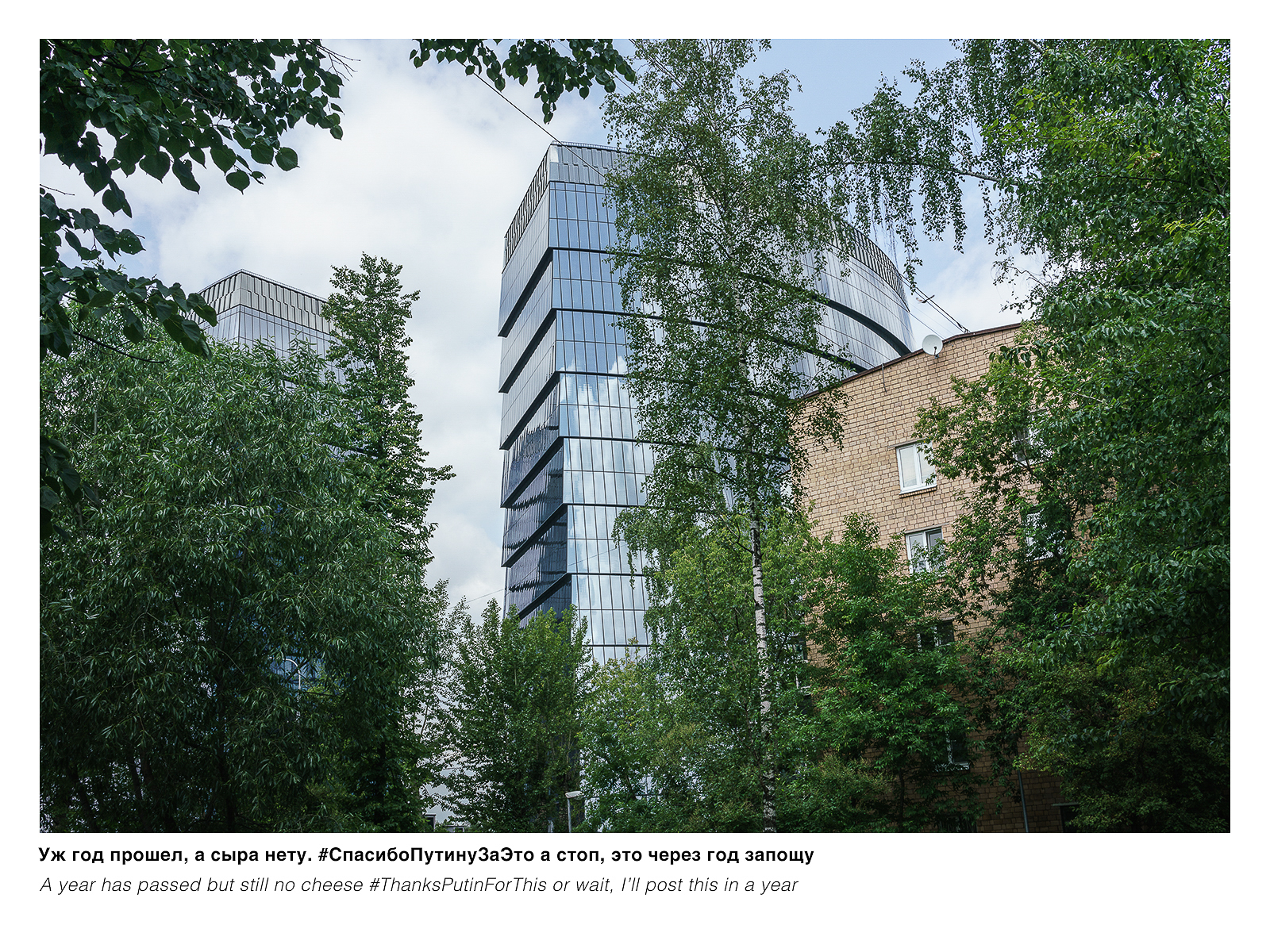Geolocation: #Gratitude
On October 7th, 2011, the blogger and now United Russia Party member Vladimir Burmatov posted a rhyming couplet on Twitter - “Moscow is warm and sunny. Summer! #ThanksToPutinForThat” (VMoskve teplo i solntse. Leto! #spasiboputinuzaeto) - and encouraged others to follow with their own tweets using the hashtag. The invitation was accepted with more than 10,000 tweets that day alone and it became the first globally trending Cyrillic hashtag. The resulting Tweets were frequently sarcastic or critical of Putin’s political agenda.
For the last seven years, through our collaborative project Geolocation, we have used publicly available embedded GPS information in Twitter updates to track the locations of user posts and make photographs to mark the location in the real world. The sea of digital noise that surrounds us has 550 million tweets per day. We reach up and pull one from the cloud, and make a photograph as a memorial to the user, and the particular moment that user stood on that space, and launched their message into cyberspace.
In June 2016, we photographed sites linked to #ThanksToPutinForThat in St. Petersburg and Moscow during a month long artist residency with CEC ArtsLink. As we began wandering the streets of St. Petersburg, the project grew. We would spend the sunlit summer evenings with our translator who would explain the nuances of Twitter speak, the political climate, and events that influenced the tweets. As we talked, we also saw the parallels to the #ThanksObama hashtag in our own country.
After completing our time in Russia, we are now working on photographing #ThanksObama in Chicago and Los Angeles, the sister cities to St. Petersburg and Moscow. The completed project will illuminate the relationships between world leaders and their constituents, examine the tensions persisting after the end of the Cold War, and analyze the use of the hashtag as a gathering point for ideas online.
This project is produced collaboratively with artist Marni Shindelman, under the name Larson Shindelman. We are grateful for curatorial guidance and translation by Iaroslav Volovod. This project is made possible, in part, by a funded residency with CEC Artslink.
